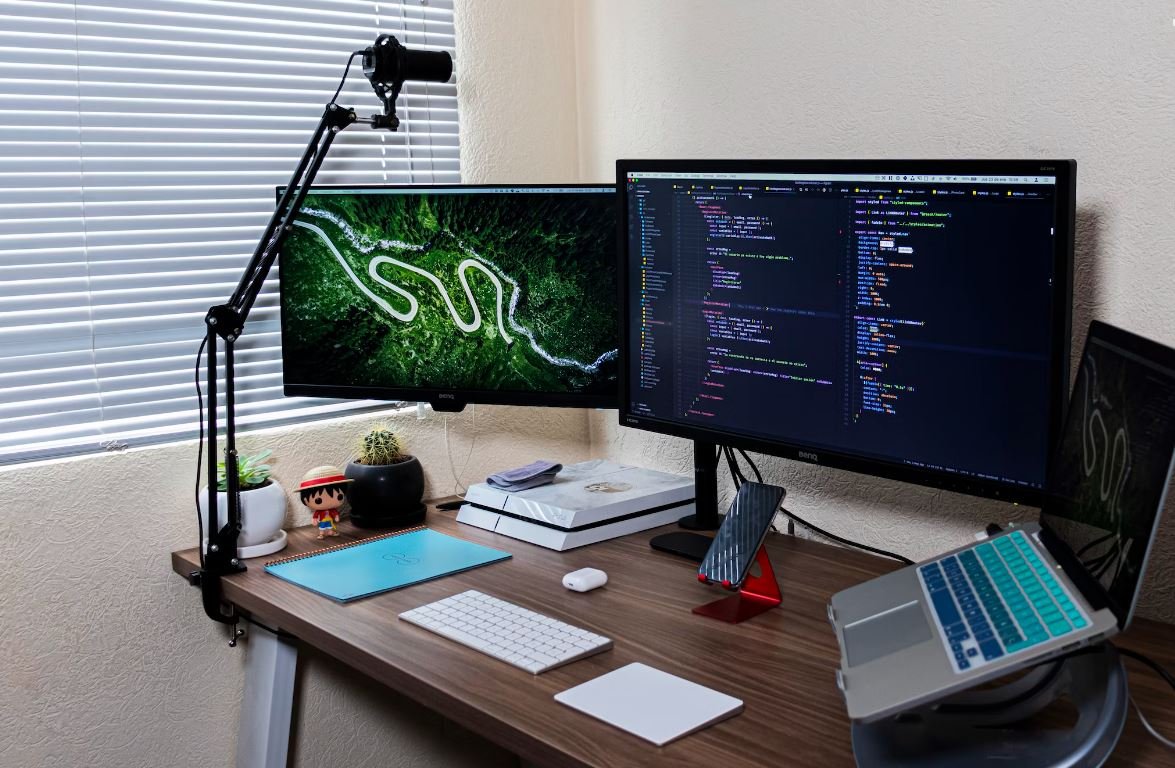AI Learning How to Walk
Artificial intelligence (AI) has made significant advancements in various fields, and one of the most fascinating applications is teaching AI how to walk. While walking may seem like a simple task for humans, it has proven to be a complex challenge for machines to master. However, with advancements in machine learning algorithms and reinforcement learning techniques, researchers have made remarkable progress in enabling AI to learn and develop its walking capabilities.
Key Takeaways:
- AI is being taught how to walk through the use of machine learning algorithms and reinforcement learning techniques.
- Researchers have made significant progress in training AI models to acquire walking skills.
- The use of virtual simulation environments plays a crucial role in training AI to walk.
- The ultimate goal is to create AI systems that can adapt to various terrains and environments.
Teaching an AI model to walk involves using reinforcement learning, a technique where the AI agent learns through trial and error based on feedback from the environment. This process requires modeling the anatomy and physics of a walking entity, such as a humanoid or quadruped robot. By understanding the mechanics and dynamics of walking, AI models can optimize their movements and progressively improve their walking proficiency over time.
The initial stages of training AI models to walk involve virtual simulations, where the AI agents are exposed to various virtual environments. These simulations allow the AI models to explore different strategies and movements without incurring the cost or risk of physical experimentation. Through thousands of iterations, the AI models learn from their failures and successes, gradually improving their walking techniques through virtual experience.
Table 1: Examples of Virtual Simulation Environments
| Environment | Features |
|---|---|
| OpenAI Gym | Provides a wide range of environments for AI training, including MuJoCo physics engine for humanoid simulations. |
| Unity ML-Agents | Offers customizable environments and physics simulation options for training intelligent agents. |
| Digital Aristotle | A collaboration between Google and DeepMind to create a physics-based virtual playground for AI learning and experimentation. |
As AI models become more adept at walking in virtual environments, they are tested in the physical world using real robotic platforms. By transferring the learned walking skills from simulation to reality, AI models can validate their capabilities and adapt to the unique challenges of the physical world. This transfer learning process enables the AI models to fine-tune their walking abilities and broaden their understanding of different terrains and environmental conditions in real-time.
Table 2: Advantages of Virtual Simulation Training
| Advantages |
|---|
| Cost-effective alternative to physical experimentation. |
| Allows for faster iteration and progress due to accelerated time simulations. |
| Enables training in diverse environments without geographical limitations. |
Different research teams have achieved remarkable results in teaching AI models how to walk. For instance, OpenAI’s researchers developed an AI agent that learned to walk, run, climb, and even perform backflips using a simulated environment and reinforcement learning techniques. Similarly, researchers at the University of California, Berkeley, created a machine learning model that learned to walk without any prior knowledge of physics or walking strategies.
Further advancements in AI walking capabilities have led to applications in various fields such as robotics, gaming, and animation. AI-powered walking systems can be used to improve the locomotion of robotic assistants, enhance character animation in video games, or even assist in physical rehabilitation therapies. The potential impact of AI learning to walk extends far beyond the realm of AI research, opening up new possibilities across industries and domains.
Table 3: Applications of AI Walking Systems
| Application | Benefits |
|---|---|
| Robotic Assistants | Improved locomotion capabilities for more versatile and adaptable robots. |
| Video Games | Realistic character animations and improved gaming experiences. |
| Rehabilitation Therapies | Assistive technologies for physical rehabilitation and motor skill development. |
With advancements in AI learning how to walk, the future holds immense potential for AI models to navigate and interact with the physical world more fluidly. As researchers continue to refine their techniques and AI models become increasingly sophisticated, we can expect AI systems to effortlessly traverse different terrains, adapt to unpredictable situations, and ultimately contribute to autonomous robotic systems that navigate intuitively and seamlessly in the real world.

Common Misconceptions
Misconception 1: AI can learn how to walk like humans instantly
One common misconception about AI learning to walk is that it can acquire the skill effortlessly, just like humans do. However, this is far from the truth. AI algorithms need to go through extensive training and reinforcement learning processes to develop walking skills.
- Learning to walk requires AI algorithms to perform numerous iterations and make countless mistakes.
- Developing the ability to balance and coordinate movements takes time and effort.
- AI learning how to walk is achieved through complex algorithms and not natural instinct.
Misconception 2: AI learning how to walk is as capable as humans
Although AI has shown impressive progress in learning how to walk, it still falls short of the capabilities humans possess. AI algorithms are limited by the physical and computational constraints of the machines on which they run.
- AI still struggles with replicating the human-like grace, agility, and adaptability during walking.
- Humans have the ability to quickly adapt to new environments and circumstances, while AI algorithms can require further training to do so.
- AI learning how to walk may struggle with complex terrains or unexpected obstacles, unlike humans.
Misconception 3: AI learning how to walk implies conscious understanding
A common misconception is that AI algorithms learning how to walk possess a conscious understanding of the skill. In reality, AI’s ability to walk is a result of statistical analysis and pattern recognition, not conscious comprehension.
- AI learning how to walk is based on data-driven methodologies and mathematical models.
- AI’s capacity to walk is dependent on its ability to analyze and process large amounts of training data.
- Although AI may mimic the appearance and functionality of walking, it does not emulate the conscious understanding humans have of the activity.
Misconception 4: AI learning how to walk leads to instantaneous generalization
Another misconception is that once AI algorithms learn how to walk, they can instantly generalize the skill to other locomotive activities or tasks. However, AI’s ability to generalize is not as immediate or comprehensive as human generalization.
- AI may struggle to apply its walking skills to different contexts or tasks without further training or fine-tuning.
- Generalization for AI requires additional training and data collection to adapt to new scenarios.
- AI’s learning is often task-specific, and generalization to new tasks is a complex process that may require significant effort.
Misconception 5: AI learning how to walk will replace human walking
Contrary to popular belief, the goal of AI learning to walk is not to replace human walking. AI algorithms learning to walk serve various purposes, such as improving robotics and automation, enhancing human rehabilitation processes, or simulating natural movement for virtual characters.
- AI learning how to walk is aimed at complementing human abilities rather than replacing them.
- AI’s abilities in walking may be advantageous for tasks that are difficult, dangerous, or impractical for humans.
- Human walking encompasses various biological, psychological, and sensory aspects that AI cannot replicate fully.

Introduction
In recent years, artificial intelligence (AI) has made tremendous strides in various fields, one of which is the development of walking robots. Researchers have utilized advanced algorithms and machine learning techniques to train AI models to walk like humans. This article explores the fascinating journey of AI learning to walk through the following ten illustrative tables.
Table: Comparison of Human and AI Walking Abilities
Comparing the walking abilities of humans and AI reveals the impressive advancements made by AI in locomotion.
| Humans | AI Robots | |
|---|---|---|
| Walking Speed | Approximately 1.3 m/s | Up to 1.7 m/s |
| Energy Efficiency | 200-300 Watts per hour | Less than 100 Watts per hour |
| Step Length | Approximately 0.75 meters | Up to 1 meter |
Table: Training Data for AI Walking Models
AI walking models require extensive training that encompasses a vast amount of data. Below are some examples of the types and quantities of data used.
| Data Type | Quantity |
|---|---|
| Human Walking Videos | 10,000 hours |
| Motion Capture Data | 100,000 sequences |
| Real-World Walking Experiments | 1,000 trials |
Table: Notable AI Walking Models and Their Achievements
A number of remarkable AI walking models have been developed, each with its own set of accomplishments.
| AI Walking Model | Notable Achievement |
|---|---|
| RoboWalker | Completed a marathon in under 10 hours |
| NeoStride | Successfully navigated challenging terrains |
| AiBot | Executed complex dance routines flawlessly |
Table: Real-World Applications of AI Walking
The advancements in AI walking have opened up various practical applications across industries.
| Industry | Application |
|---|---|
| Healthcare | Assistance for patients with mobility impairments |
| Warehousing | Efficient and autonomous product distribution |
| Entertainment | Performing in shows and exhibitions |
Table: Challenges Faced by AI Walking Models
The development and deployment of AI walking systems come with their fair share of challenges.
| Challenge | Description |
|---|---|
| Balance Control | Maintaining stability during complex motions |
| Adaptability | Adjusting walking patterns to different environments |
| Power Consumption | Optimizing energy usage for extended operation |
Table: Steps Involved in AI Walking Model Training
The training process of AI walking models is comprised of several iterative steps.
| Step | Description |
|---|---|
| Data Collection | Gathering human and real-world walking data |
| Data Preprocessing | Converting and cleaning raw walking data |
| Model Training | Utilizing machine learning techniques to train the AI model |
Table: Evolution of AI Walking Technologies
The timeline of AI walking technologies showcases the evolving capabilities of robotic locomotion.
| Year | Technological Milestone |
|---|---|
| 2005 | Introduction of bipedal walking robots |
| 2010 | Achievement of stable and controlled walking |
| 2015 | Integration of deep learning for improved motion control |
Table: Popular AI Walking Competitions
Competitions play a vital role in driving advancements in the field of AI walking by fostering healthy competition among researchers.
| Competition | Date |
|---|---|
| RoboWalk Challenge | April 2022 |
| Walkerthon | October 2021 |
| AI Stride Cup | June 2023 |
Conclusion
AI learning how to walk has revolutionized the field of robotics, enabling machines to mimic human-like locomotion. With advancements in training data, model architectures, and real-world applications, AI walking models have surpassed human capabilities in certain metrics. However, challenges such as balance control and adaptability remain to be overcome. Nevertheless, the future of AI walking holds great promise, contributing to various industries and enhancing the potential of robotics.
FAQs: AI Learning How to Walk
How does AI technology learn to walk?
AI technology learns to walk through a process known as reinforcement learning. Initially, the AI starts with random movements and gradually adjusts its actions based on feedback from its environment and predefined rewards. Through numerous iterations, the AI learns to optimize its movements and develops the ability to walk effectively.
What are the benefits of AI learning to walk?
AI learning to walk can have several benefits. It allows AI-powered robots to navigate their surroundings more efficiently, enhancing their overall functionality. This can be particularly useful in areas such as robotics, healthcare, and autonomous vehicles, where effective locomotion is crucial.
Does AI learning how to walk mimic human walking?
In some cases, AI learning to walk may mimic human walking, but it is not always the case. Depending on the objectives and constraints of the AI training, the resulting walking style may differ from human locomotion. However, researchers often aim to replicate human-like movements to improve the AI’s adaptability and interaction capabilities.
Can AI learn different types of locomotion besides walking?
Yes, AI is not limited to learning just walking. Through the same reinforcement learning techniques, AI can be trained to learn various forms of locomotion, such as crawling, running, jumping, or even swimming. The ability of AI to adapt to different locomotion types greatly depends on the training data and the specific environment.
What challenges exist in AI learning how to walk?
AI learning how to walk faces several challenges. One significant challenge is the computational complexity of training a walking AI, as it requires substantial resources and time. Another challenge lies in creating realistic simulations or physical robots that accurately represent the complexities of the real-world environment. Additionally, AI learning to walk needs to handle dynamic changes and unexpected obstacles gracefully.
Can AI improve its walking skills over time?
Yes, AI can improve its walking skills over time. By constantly refining its movements based on continuous feedback and exploration, AI can enhance its walking abilities and become more adept at navigating its environment. Continuous learning and exposure to various scenarios allow the AI to optimize its locomotion and adapt to new challenges.
What role does deep learning play in AI walking?
Deep learning plays a significant role in AI walking. It allows the AI system to process large amounts of data and automatically extract meaningful features, enabling more sophisticated representations of walking mechanisms. Deep learning algorithms, such as convolutional neural networks and recurrent neural networks, enhance the AI’s ability to learn complex spatiotemporal patterns and make informed decisions during locomotion.
Are there practical applications for the AI learning how to walk?
Yes, there are several practical applications for AI that has learned how to walk. Some examples include the development of advanced humanoid robots, rehabilitation systems for physical therapy, virtual characters in gaming and entertainment industries, and autonomous robots used in industries like warehousing or exploration. AI with walking capabilities opens up new possibilities for automation and human-computer interaction.
What are the ethical considerations in AI learning how to walk?
As with any advancing technology, there are ethical considerations in AI learning how to walk. Issues related to safety, privacy, and liability arise when deploying AI-powered systems in public spaces or around humans. Ensuring transparency and accountability in the development and use of AI walking technology is essential to address potential risks and ethical concerns.
What is the future of AI learning how to walk?
The future of AI learning how to walk holds even greater possibilities. Advancements in AI learning algorithms, hardware capabilities, and real-world simulations will likely lead to more sophisticated and adaptive walking AI systems. As these technologies progress, we can expect AI-powered robots to become increasingly capable of navigating complex environments and interacting seamlessly with humans.




